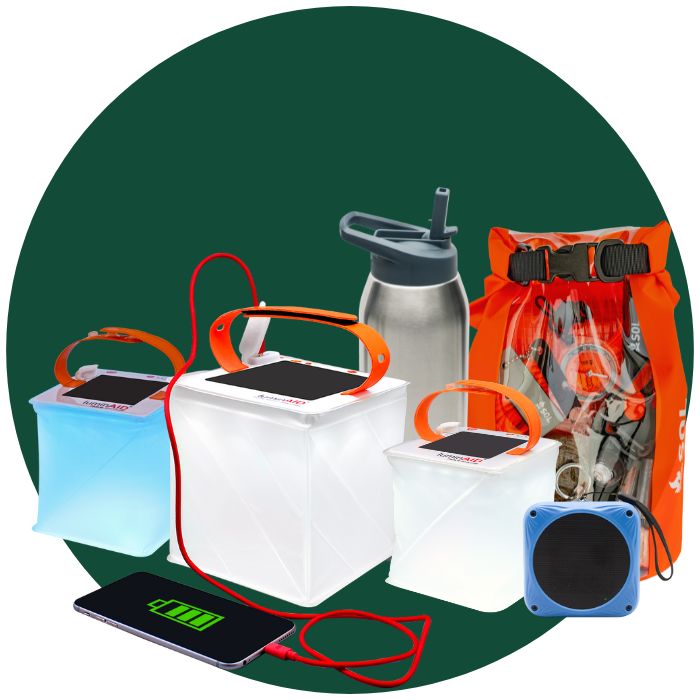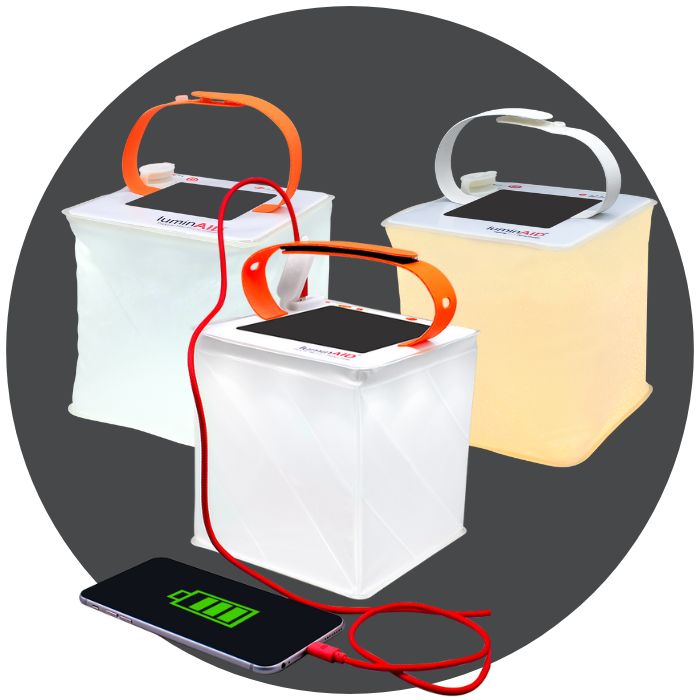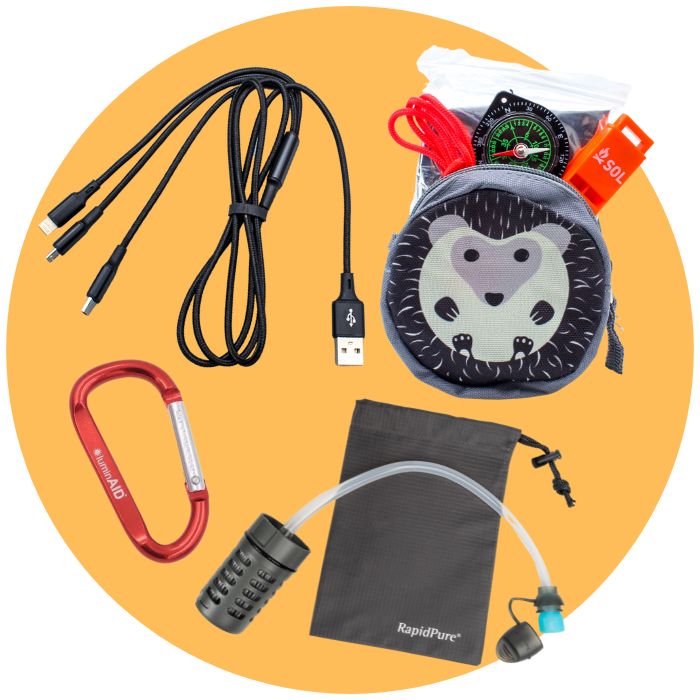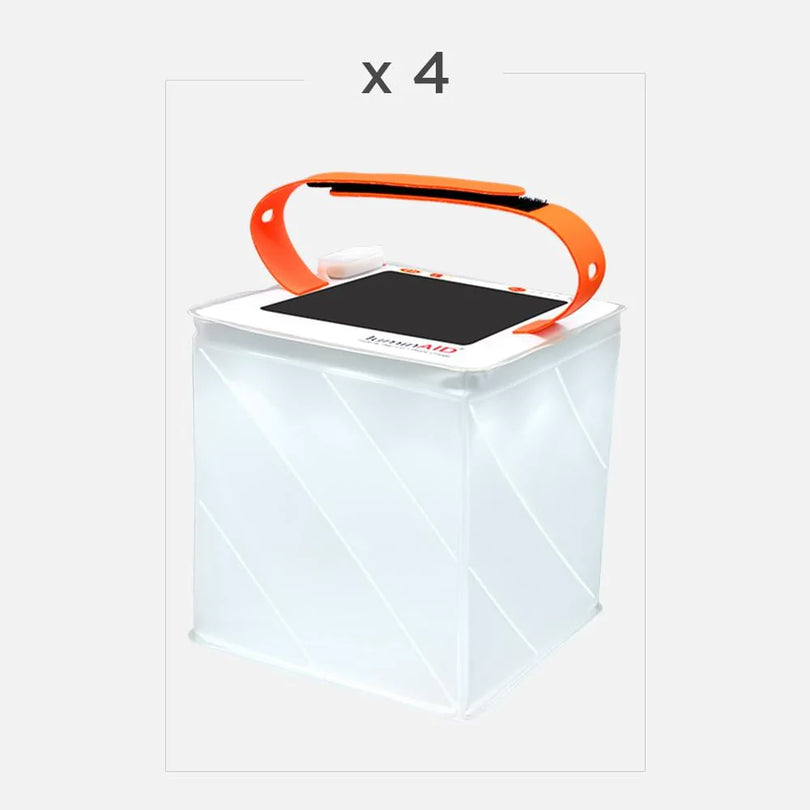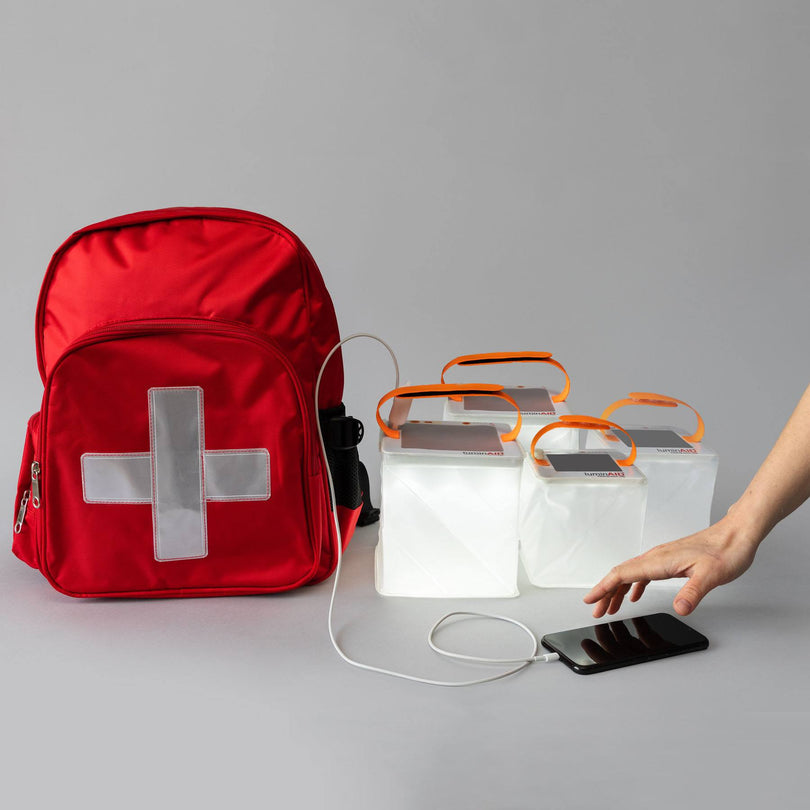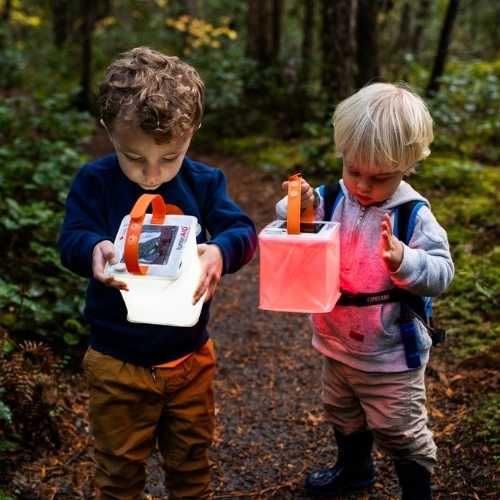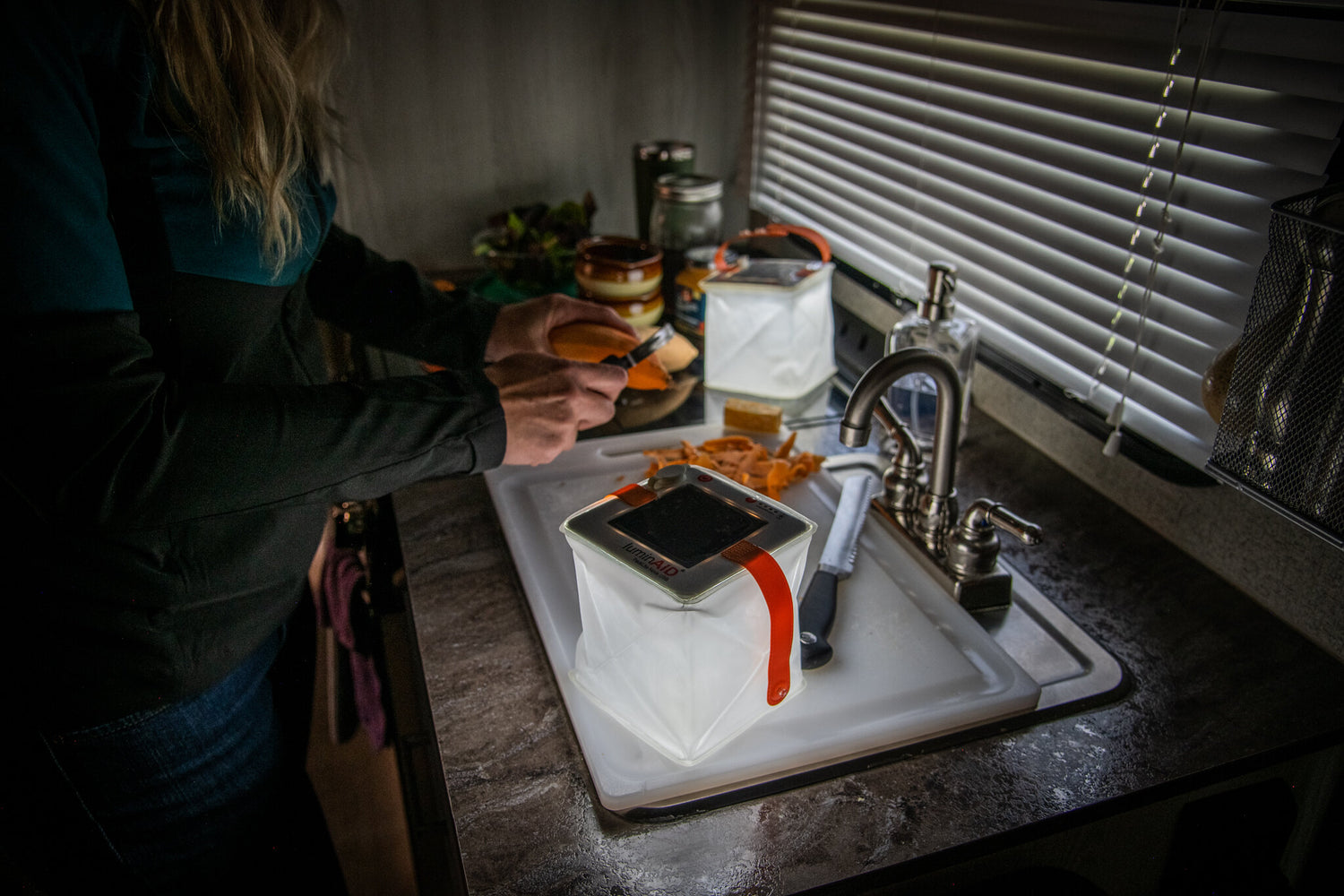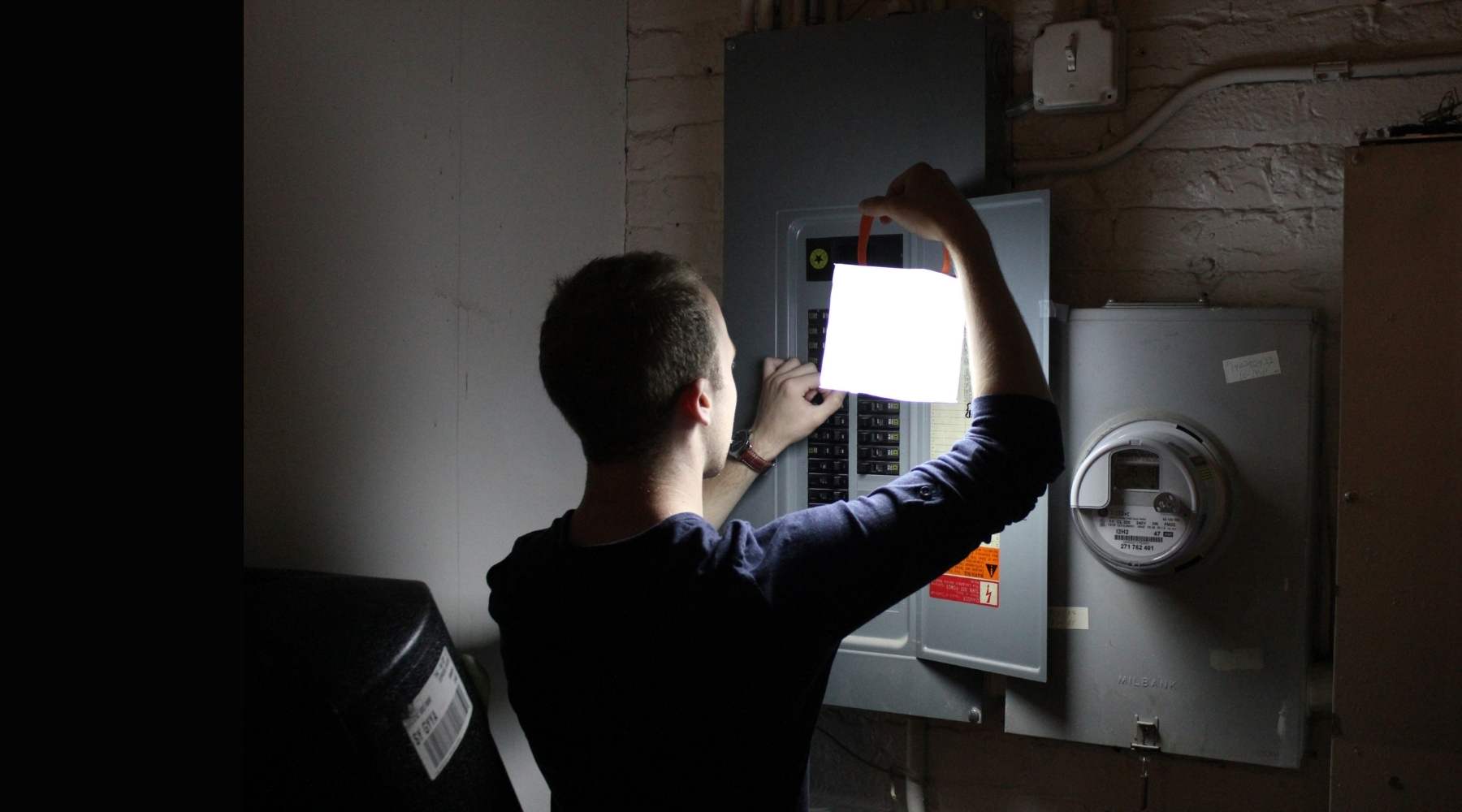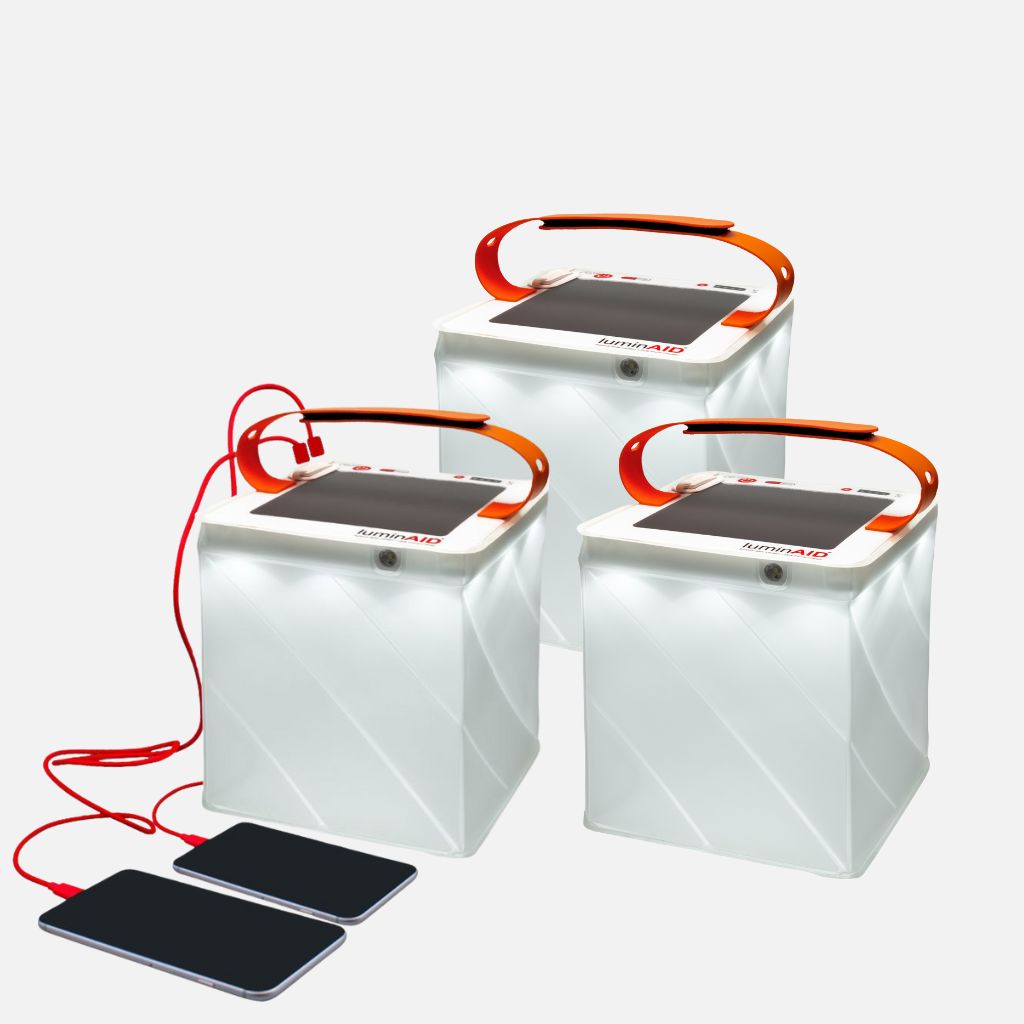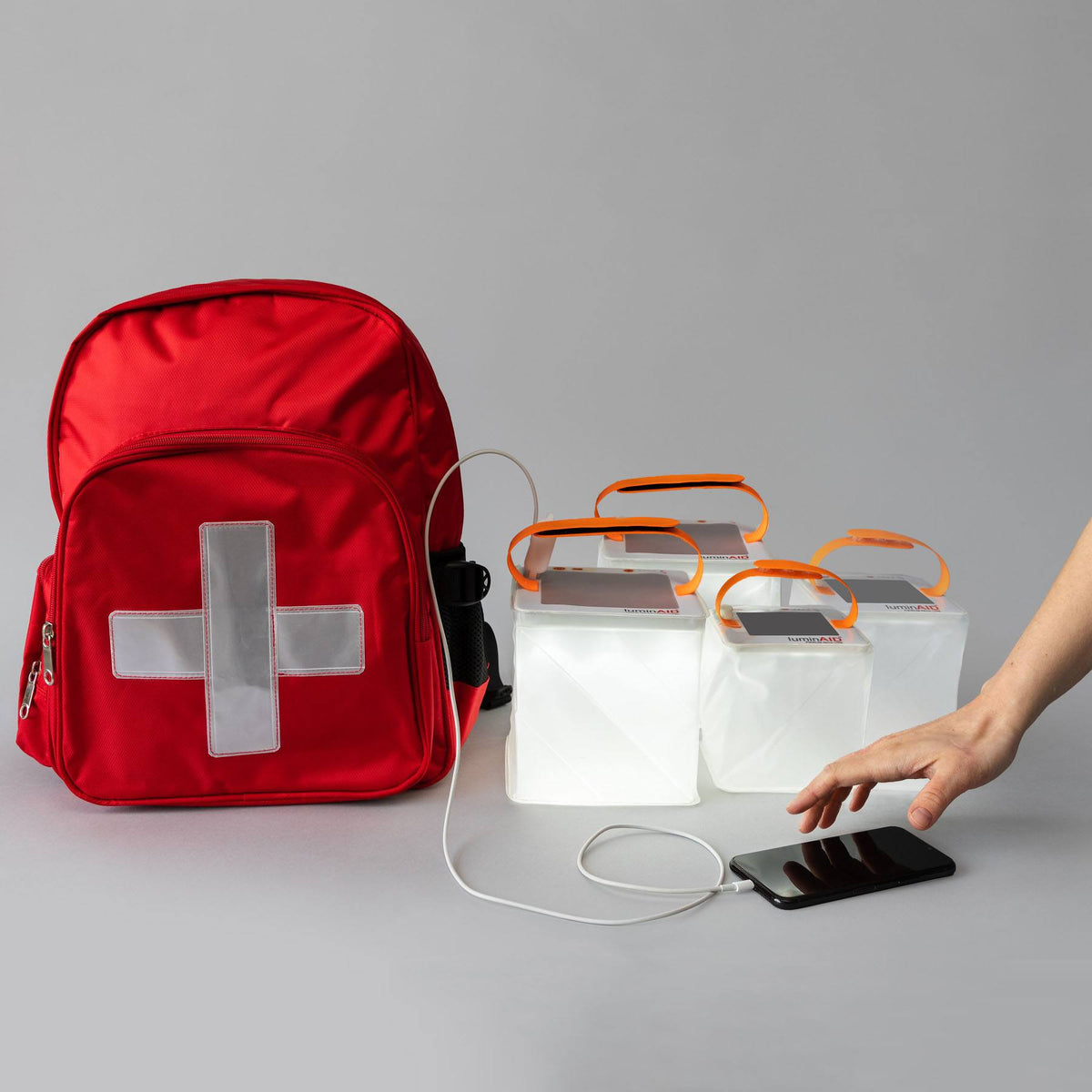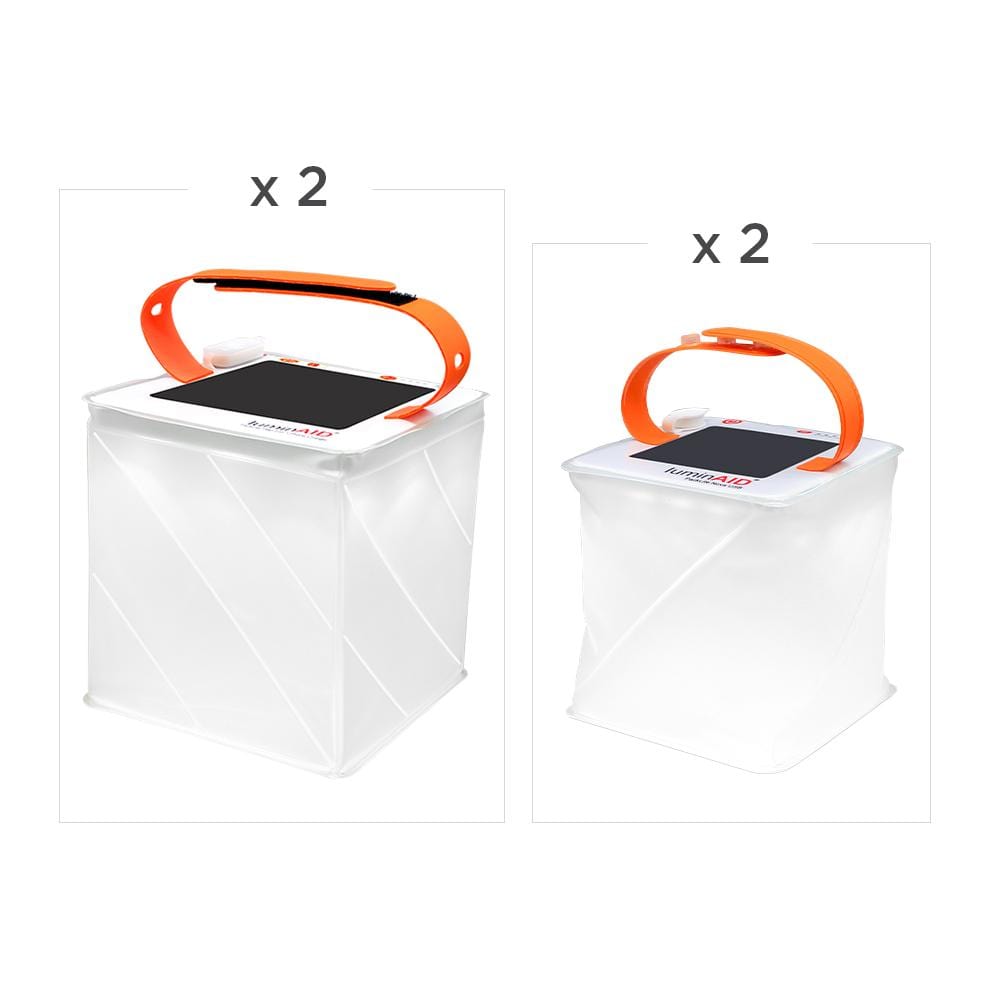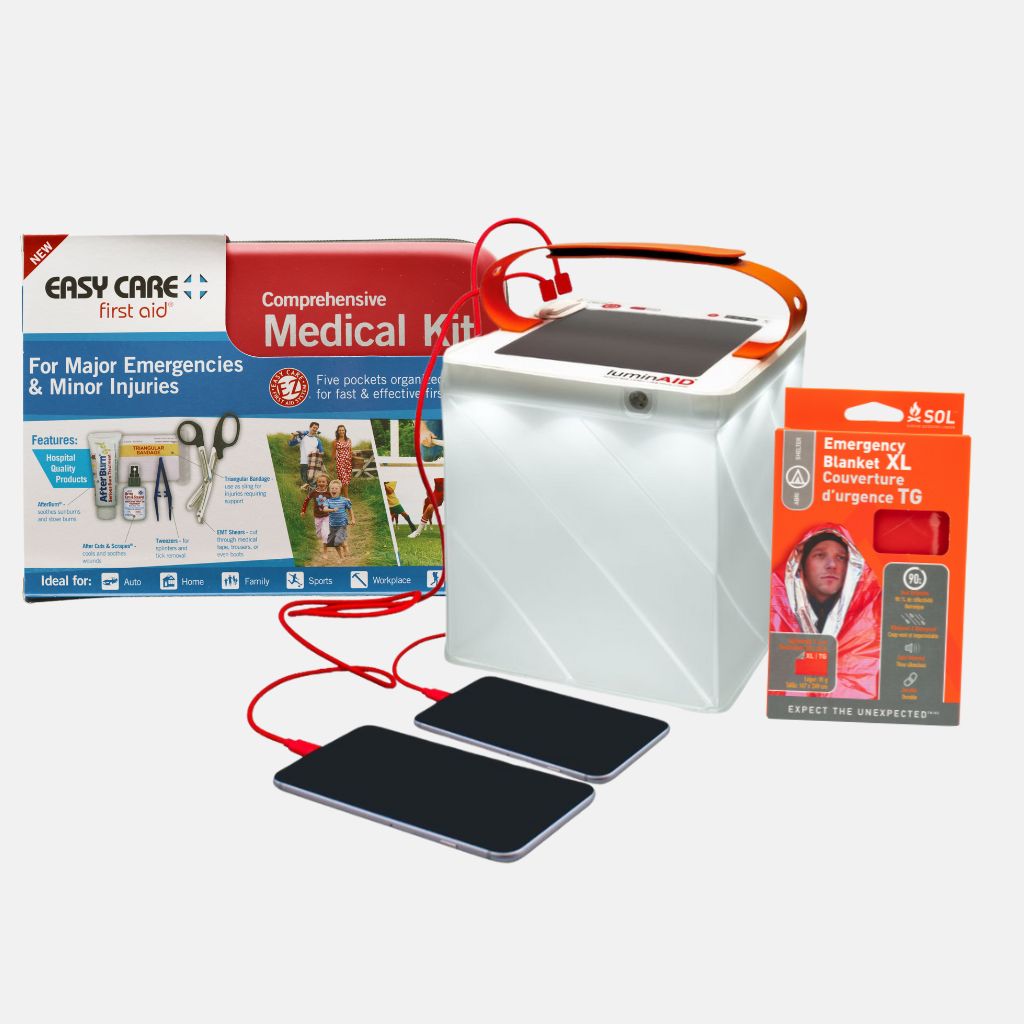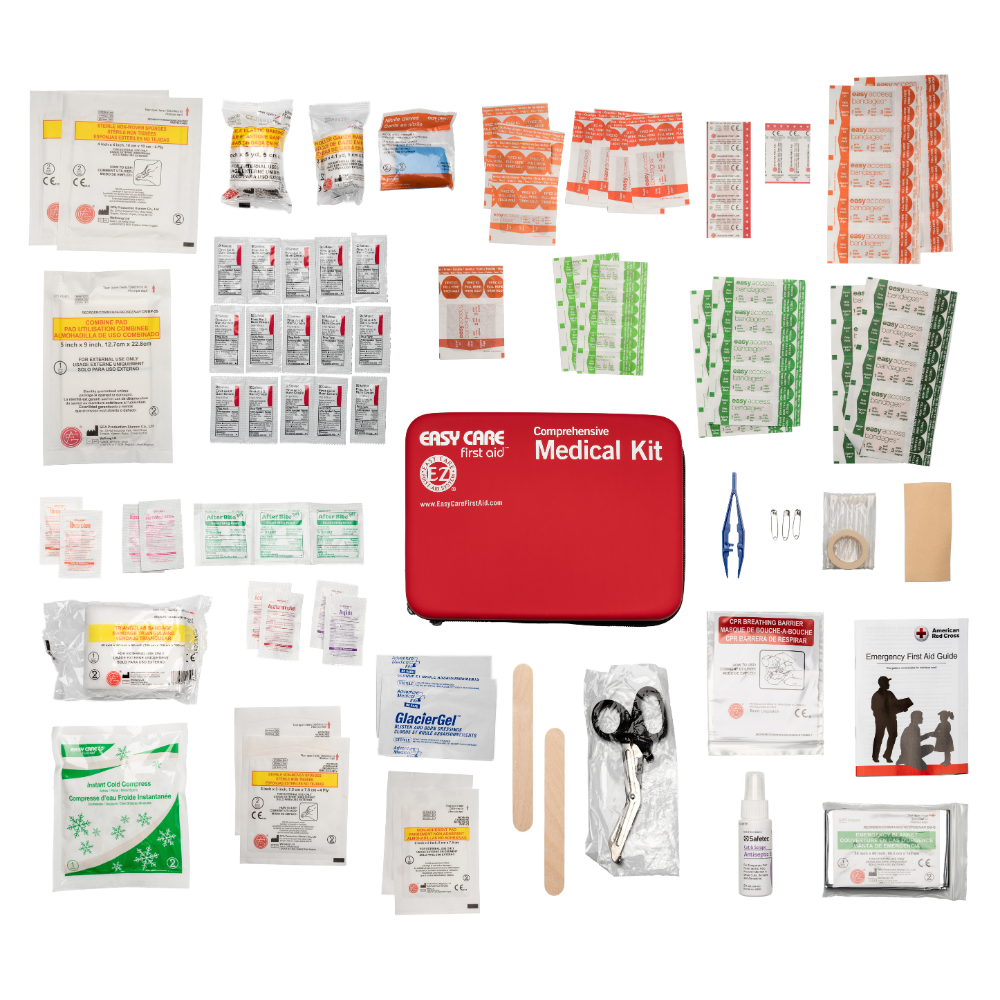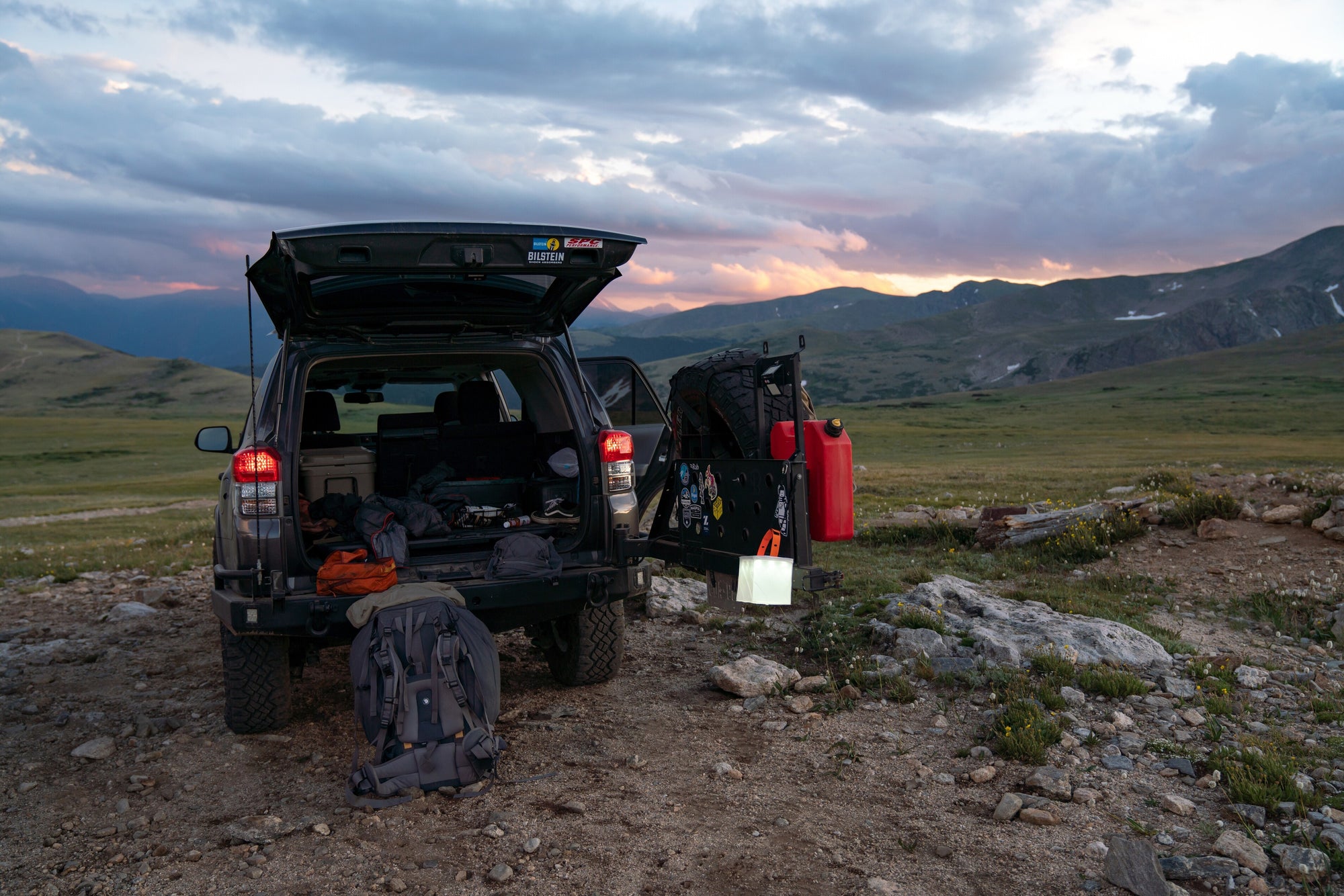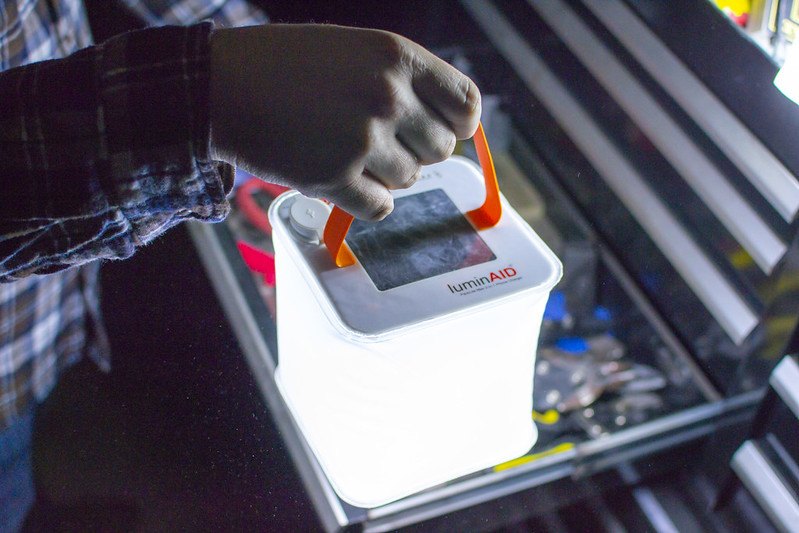If you live in a hurricane-prone area, you probably know the importance of planning ahead for hurricane season. But how exactly do you prepare for a hurricane, and where do you start? Stocking up on food is a great way to build your hurricane kit, and it’s super easy! Here are our tips on what food you should store for hurricanes in case you need to shelter in place at home for several days.
Supplies to keep in your hurricane kit
There are a few important categories of food that you need to consider when building a hurricane kit.
Dry food
These are non-perishable items that can be kept at room temperature. Boxed pasta, crackers, chips, dried fruits, rice, and powdered milk are all examples of dry foods. Dry food expires, so be sure to check periodically that it is safe to eat.
Canned food
These are non-perishable items that can be kept at room temperature and are packaged in aluminum or tin cans. Tuna, peaches, beans, and chili are commonly canned foods. Canned food expires, so be sure to check periodically that everything is safe to eat.
Bottled water
You can either purchase this at a grocery store, or fill up large-capacity jugs with drinking water. You must have at least a three day supply of water for your entire family, which means one gallon per person per day. However, we recommend at least a two week supply, since hurricanes are often prolonged disasters. It’s also a great idea to add a water purifier to your kit in case your supply of drinking water runs out.

What foods to keep in your pantry for emergency
When planning your emergency food supply, be sure to pack enough food to provide each family member a meal for two weeks. Meal planning is easy when you stick to easy-prep food – here are the necessities that we suggest adding to your list.
Crackers
Crackers are a good source of carbohydrates, which provide energy that is necessary in an emergency. They can be combined with proteins such as meat and cheese, or eaten on their own. Crackers also are a great substitute for bread, which expires quickly–instead of a peanut butter sandwich, you can have peanut butter and crackers.
Nuts / trail mixes
Nuts are a great source of protein and a filling snack. They are shelf stable for about 6 months, and don’t need to be refrigerated. While nuts on their own can get a bit boring, nut butter is a versatile snack that can be eaten with fruits, vegetables, crackers, wraps, or on its own. Be sure to get a butter that doesn’t require refrigeration after opening.
Cereal
Cereal is a great source of carbs and fiber, and is an easy breakfast that gives you lots of energy for the day. It’s cheap, easy to store, and a family favorite – just because you’re in a hurricane doesn’t mean you have to stop eating your favorite things!
Dried fruits
Dried fruits have lots of fiber and calories, which make them a great snack option. They have a relatively long shelf life, and can be stored for up to a year. They can also be used to give extra flavor to oatmeal and cereal.
Canned soups
Canned soups are an easy meal with lots of protein and an amazing shelf life. You can store some soups for up to five years, which means you won’t have to worry about replacing them often. Canned soups require no preparation, and while you might want to warm them, they will taste great cold as well.
Canned tuna
This emergency kit staple packs some serious protein, and has a shelf life of up to five years. Canned tuna can be combined with other ingredients to make a meal (like tuna salad) or eaten on its own. It’s great to stock up on other canned proteins for variety, such as salmon, sardines, and chicken. Be sure to get options that you know the whole family will enjoy.
Canned vegetables
Canned veggies add important fiber to your diet. They can be combined with other foods to create a balanced meal, which is essential in any disaster situation. You can choose options such as mixed peas and carrots, which are great as a side dish, or canned green beans, which work as a side dish or a standalone snack. Canned vegetables have a shelf life of up to 5 years.

Salt, pepper, sugar
Stock up on these cooking necessities and any spices you frequently use. It’s important to make the food you cook during an emergency as tasty as possible if you want to increase the comfort of you and your family members during this time. Having some favorite flavors on hand boosts morale like nothing else.
Instant Noodles
They're not only quick to prepare but also comforting during stressful times. Their variety of flavors caters to different tastes in the family. They can be a standalone meal or combined with other ingredients like canned vegetables for a more nutritious option. Also, instant noodles have a long shelf life.
Energy Bars
Packed with nutrients, energy bars provide essential energy and sustenance. Their variety caters to different dietary needs and preferences. Energy bars are also long-lasting, ideal for extended periods without power. They can be a quick breakfast or a handy snack.
Peanut Butter
Commercial peanut butters may last 6–24 months unopened, or 2–3 months once opened. It is rich in protein and healthy fats. It's also versatile: spread it on bread, add it to oatmeal, or eat it straight from the jar. The only caveat is that peanut butter is not your choice if you are allergic to peanuts.
Powdered milk
Since power outages will likely affect your home in a hurricane, it’s a good idea to have alternatives to staples that must be refrigerated. Powdered milk can be stored indefinitely, according to the USDA, so it’s a great idea to grab some for your hurricane kit. Don’t settle for dry cereal!
Instant coffee and tea bags
Stock up on extras of these in case of emergency – that boost of caffeine might be exactly what you need to get through a tough situation. Be sure you also have a way to heat water, such as a camp stove and kettle.
Dry pasta
Unopened dry pasta has a shelf life of about 2 years and is a great source of protein and carbohydrates. It is a very filling meal option, which makes it perfect for lunch or dinner during a hurricane. A little goes a long way, so you can make each box last.
Jerky
Jerky is a great snack that’s full of protein and has a shelf life of up to a year. Keep a large supply on hand to tide over everyone’s appetites between meals.
Pet food
Don’t forget to plan for your pets! Stock up on extra food for each animal, ideally a two week supply. It’s not a bad idea to keep around some extra treats as well. Animals often act differently during storms, and treats help to both comfort them and convince them to behave if they are being stubborn.
How to be creative with your foods from the hurricane kit
With so many foods in our hurricane kit, let’s explore creative ways to turn this hurricane food into delightful meals. We have several simple recipes where you can use the foods from the list above.
Instant Noodles and Dry Pasta
These two can be transformed into gourmet experiences. Imagine elevating a simple pack of noodles with the rich flavors of canned soup or tossing your pasta with canned vegetables. For a protein boost, consider flaking in some canned tuna or throwing in a handful of nuts.
Ready-to-Eat Meal Transformation
Ready-to-eat meals are convenient, but they can also up your culinary creativity. Try pairing them with crunchy crackers or sweet dried fruits for a texture and flavor contrast. Mix and match different canned vegetables and proteins to discover your next favorite emergency dish.
Energy Bars, Nuts, and Trail Mixes
Energy bars and nuts can be a base for this great recipe. Crush energy bars to sprinkle over cereal for a breakfast twist, or mix nuts with dried fruits to create your custom trail mix. Such small additions can significantly enhance the nutritional value of your meal during a power outage.
Cereal and Dried Fruits
Combine cereal with dried fruits, nuts, and a dash of honey for a satisfying snack. You can also try making a cereal-based dessert bar for a sweet treat during those stormy nights.
In summary, creativity in the kitchen is especially crucial during emergencies. With a little imagination, your hurricane food stockpile can transform into nourishing meals. Now over to food safety.
Food safety
Food safety and sanitation are super important during disasters. It’s easy to get foodborne illness if you’re not careful. Here are some tips on how to stay safe.

What to do
- Wash hands before preparing food and after handling raw meat
- Store all food in covered containers
- Check expiration dates before eating food
- Any food that has been contaminated with dirt or waste, or eaten by animals and insects should be disposed of
- Any refrigerated foods that are above 40 degrees Farenheit for longer than two hours should be thrown away
- If fridge power is out for more than four hours, dispose of all perishable foods that are in the fridge
-
Any food with bad odor should be thrown away immediately
What not to do
- Don’t eat expired food
- Don’t eat from a can that looks swollen or corroded
- Don’t eat food if it is moldy or smells bad
- Don’t keep food waste in living areas, dispose of it in a contained and peripheral location
Must-have items in your hurricane kit next to the foods
These items will make your life a lot easier, especially when you’re making a quick meal.
Source of light
We all cook after dark sometimes, and in a disaster that has caused a power outage, that can pose some serious challenges. Having a reliable, bright source of light is an important safety measure you can take to make sure all of your cooking goes smoothly.
LuminAID Power Lanterns are a great option. They are extremely bright, so they will light up any cooking area with ease. They are also durable, lightweight, dirt-proof, waterproof, and hangable. These versatile lanterns can be used anywhere in any conditions, and they’re fully rechargeable with solar power. Even without electricity, this lantern will continue to shine.
Plus, they double as a phone charger! The most powerful option charges 2-3 phones before losing battery. With LuminAID lanterns, you’ll have a bright kitchen and a charged phone, even in a prolonged power outage.
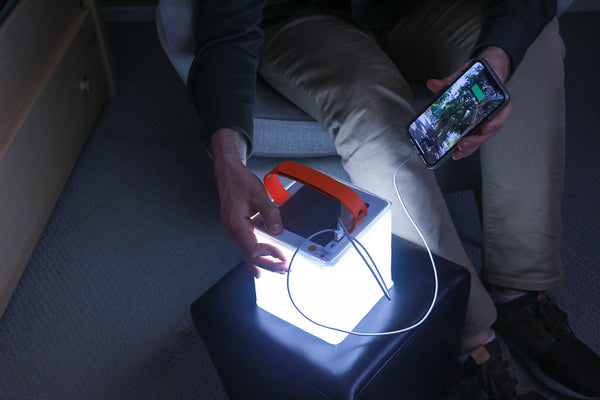
Matches
Matches are essential for lighting gas stoves, camp stoves, and grills. Keep a large stock of matches near your food supply so you never have to look for them when you want to cook a meal. It’s a great idea to get some waterproof matches as well in case you have to cook while exposed to the elements.
Can opener / Knife
Designate a spot for your can opener and knife. Both of these items are essential for cooking your hurricane prep food with ease, so make sure you don’t lose them. Keep the knife sharp, and test your can opener to make sure it functions properly.
Maintaining your hurricane kit
Once you’ve got everything packed and ready, you’ll want to make sure that your hurricane kit is in top shape for the next storm. You can do this by finding a strategic place to store your kit, and by checking on it every so often.
Keep in a cool dry place
These are the perfect conditions for your food to store well. Make sure the food is out of the sun and away from any damp spaces and flood hazards. Keeping your food safe to eat is an important part of hurricane prep, as the grocery store shelves may be empty if you are forced to buy more food at the last minute.
Keep in a metal or plastic bin
Protect your hurricane prep food from pests by storing it in a bin. This also keeps the food organized and ensures that none of it is lost among other supplies. Bins provide easy food transport if evacuation becomes necessary.

Replace expired supplies
Check your emergency kit before every hurricane season for expired food. If you find an expired item, immediately remove it from the supplies and replace it with a new product. To prevent excess food waste, you can also take out any items that are about to expire and incorporate them into everyday meals. Just make sure to replace any items you remove from the supplies kit.
When you do this check, make sure to recharge any solar powered items as well. Though they keep their charge for longer than six months, it’s a good maintenance protocol to follow.
Summary
Planning food for your hurricane kit can be easy as long as you keep it simple. Choose shelf-stable food that is dry or canned and has a far expiration date. Pack enough food for each family member to have a meal for two weeks. Keep in mind both the nutritional value of the foods as well as the likes and dislikes of each family member. The more energy-packed you can make each meal, the better! As long as you follow these easy steps, everyone will be comfortable, well-fed, and healthy during the next storm that comes your way.

